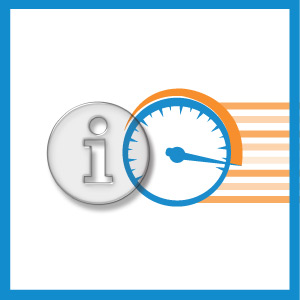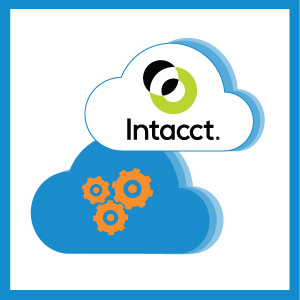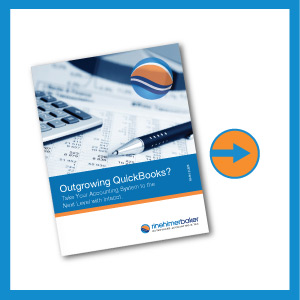Conventional wisdom tells us that we have to make mistakes in order to learn and grow. That’s definitely the case with on-the-rise businesses, who make plenty of mistakes as they move their operations from entrepreneurial through enterprise-level. Sure, there’s a lot of in-between—but near-constant change and recalibration in the ways the organization manages everything from its finances and supplier relationships to customers and human resources means plenty of opportunity for missteps.
When it comes to its accounting functions, a business needs to repeatedly scale to accommodate new partners, additional transactions, and more complexities at almost every turn. So what mistakes are commonly made along this road of growth? And perhaps more importantly, what do innovative leaders do to better manage change and arm their finance and accounting teams with the tools for success? To avoid making the mistakes in the first place?
Let’s take a look.
Failing to Deliver Insights On-Demand
As a company grows, the stakes get ever greater. Not only do decision-makers have more questions to ask, they have more question to answer from various stakeholders. Their answers need to be informed—relying on more than gut instinct. And financial data is often the most important part of what they need to consider while selecting the “best” path forward.
In the early stages of company growth, it was perhaps easier to produce actionable insights because there was simply less to “go on.” But with increased complexity (and more information available from the accounting department), running reports and landing on the critical numbers takes longer—that is, as long as the finance and accounting team is still using yesterday’s technology.
When a manager asks for performance results or projections based operational or financial data (especially if it’s real-time data), they need to see it now. If your team can’t deliver it until tomorrow, it becomes clear to all that you probably should have upgraded your finance and accounting software yesterday.
With Intacct, your team is empowered to create any kind of report, dashboard, or visualization they want, with exactly the metrics they need. And that enables managers to ask new business questions, get fast answers, and make confident decisions—in the now. For more insights, turn to The 3 Top Reasons Your Accounting Team Wants to Upgrade to Intacct.
Keeping Your Financial Information in Silos
Another side effect of managing a growing business is a set of disparate business systems. In the first place, they weren’t set up to “go together,” so they don’t “grow together.” Secondly, if they’re legacy or manual-based systems, they no longer offer adequate functionality, which further fragments processes via workarounds and system band-aids. The result is often poor communication between people in different functional areas and not enough sharing of data—making it almost impossible to compare apples to apples and get full visibility into the business’s financial health.
The reality is that when your systems are siloed, you’re not getting the most out of your ever-expanding data. And you’re likely draining productivity, too, as everyone is working towards different goals, with competing agendas. The reality is that systems and people need more—not less—alignment as the business grows. If you’re not bringing them together, you may be thwarting forward momentum. Consider the opportunity costs!
Modern finance accounting systems are powerful enough to integrate functions, pulling data from multiple sources of information to aid in tasks like reporting and document retrieval. With Intacct’s flexible, services oriented architecture (SOA), you can sync up to your other business applications, such as:
- CRM and sales force automation
- Human resources
- Inventory and fixed assets
- Project management
- Payment processing
- Payroll and ACH
With the right system integrations in place, your information becomes more powerful—and so do the insights and decisions they inform.
Relying on Manual Accounting Processes
Consider your finance and accounting team’s various tasks and related workflows: vendor management, billing, journaling, making payments, reporting…this is just for starters, and the work is getting more comprehensive as the company gets bigger, expanding into new markets and into multiple entities. Now consider the work associated with following-up on unpaid invoices, getting caught-up with old expense reports, spending late nights at the office to close the monthly books.
If there’s “manual processing” written all over these tasks, your team is likely spending more time and energy on a daily basis than they need to. Now that your company is bigger, the old methods of accounting (both managerial and financial) have become unwieldy. It would be a mistake to keep plugging along this way—and to not start automating. Using modern technology to take care of tasks like recordkeeping, issuing invoices, paying bills, managing expenses, generating reports, etc., will free up your team to focus on more strategic efforts.
Read Stop Relying on Spreadsheets and Luck – There’s a Better Way
Adopting automation through Intacct is a sure-fire way to relieve your manual woes. Learn more about how to embrace the automation needed to thrive today.
Not Having Audit-Ready Financials
Are you ready for a visit from the auditor? Do you know what it takes to be audit-ready? Do you want your audit process to run smoothly upon a solid foundation of well-documented transactions and accurate balances? Do you make it easy for your auditor to find the information they need?
If reading these questions leaves you feeling uneasy, there’s hope ahead. It’s never too late to start improving your accounting processes to avoid costly mistakes and oversights. According to Intacct, there are three things you need to be audit-ready:
- Revenue – ensure your accounting system effectively automates, manages, and documents your revenue accounting treatment, with the ability to define separate revenue recognition schedules and rules for each individual contract and line item.
- Receivables – establish an auditable basis for assessing the value of receivables. Your accounting software must track complete transaction details “forever” and maintain secure access to complete customer histories, allocating payments to the right invoices and periods.
- Consolidation – understand that massive spreadsheets tend to contain formula errors and missing some general ledger accounts. For a complete and accurate financial consolidation, you should rely on your accounting system automate provide a full set of consolidating and eliminating journal entries so the auditor can see the details behind each entry.
Take A Brief Look Into Revenue Recognition Standards.
Using the Wrong Accounting Software
You may have outgrown the software that worked when you were a smaller organization—or you’re finally accepting that Excel spreadsheets are a far cry from robust accounting/reporting software. Either way, your current system is limiting you and holding you back from faster, more targeted growth.
As the other common mistakes have shown, adopting a built-for-growth finance and accounting software solution is the #1 way to give you more control and visibility into your financials. It can help you avoid mistakes that could be costing your business—or that could lead to opportunity costs. Find out How to Know When QuickBooks No Longer Makes the Cut
Whitepaper: Outgrowing QuickBooks
rinehimerbaker has released a new whitepaper for companies outgrowing QuickBooks. Outgrowing QuickBooks—How to Know It’s Time to Change shares the challenges that businesses face when growing, and the opportunities they have to ease growth. Learn more by reading the first 3 pages of the whitepaper below:












